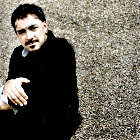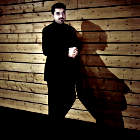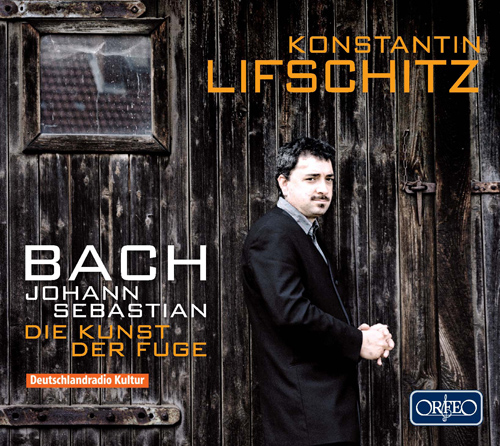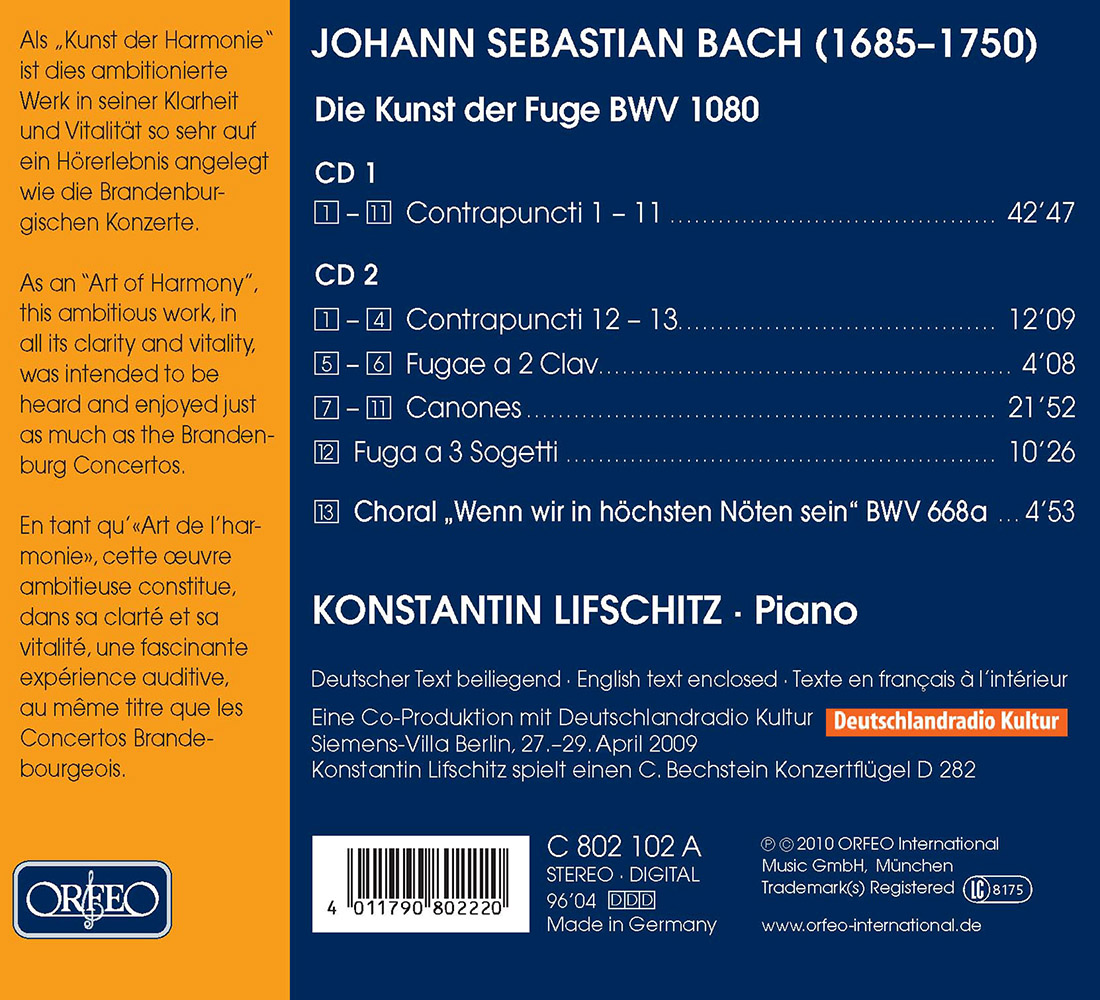Bach, J.S.: Die Kunst der Fuge
There has been much speculation about the Art of Fugue, Johann Sebastian’s unfinished work from his final decade. What would the ending of Fugue No. 19 have been? How would be the basic theme have been varied further, after all the multiplicity of variants that had gone before it? And what instrument(s) was it intended for? 

Konstantin Lifschitz
Foto: Felix BroedeFor one or more keyboard instruments, or even (since it is notated in score) a whole chamber music ensemble? Konstantin Lifschitz made a stir with his world première recording of his own piano solo version of an even later “late” work, the Musical Offering (on C 676 071), but he does not feel on the other hand that the Art of Fugue is “wholly a keyboard work (although it can be realized wonderfully on a keyboard). I myself can only perform it at a keyboard, and I can do it best on the piano”. Today he is known across the world for his Bach interpretations (but by no means just for them). During his student days he played one or other of the fugues sporadically, either individually or in pairs. At that time, the Art of Fugue was never played entire in a single programme, let alone on the piano (though for Lifschitz, it is a work that really should be regarded as a single unit). Now a complete recording is finally available on CD. Lifschitz even performs the mirror fugues that until recently were regarded as unplayable by two hands (Bach had two players in mind). And thanks to the virtues of multi-track recording, he is also able to realize the four-part version of the three-part mirror fugue that Bach expressly intended for two players. The “Canon per Augmentationem in Contrariu Motu” is also offered in an earlier version too. In accordance with the tradition begun by the work’s first publication, the recording closes with the chorale “Wenn wir in höchsten Nöten sein”, BWV 668a, which Bach’s closest family circle said he dictated in his final days. With such a “uniquely open” work such as the Art of Fugue, Konstantin Lifschitz cannot imagine there could ever be a single interpretation that would set the standard for all others. But whoever hears his new recording of this cycle cannot but reserve him a front-row seat.

















